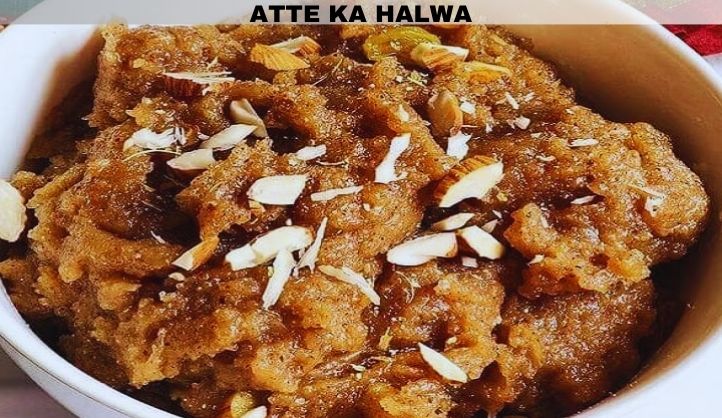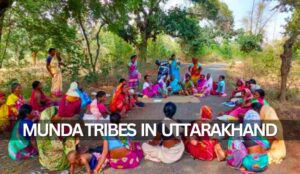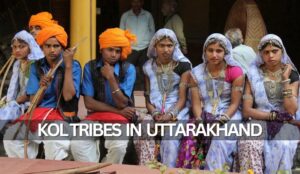Nestled in the heart of the Himalayas, Uttarakhand is not only renowned for its breathtaking natural beauty but also for its rich culinary heritage. Among the many traditional dishes that grace the tables of Uttarakhandi households is the delectable Atte ka Halwa—a sweet and aromatic dessert that embodies the essence of warmth, comfort, and celebration. Join me on a journey as we explore the history, preparation, and cultural significance of Atte ka Halwa in Uttarakhand.
The Heritage of Atte ka Halwa
Atte ka Halwa, also known as Kada Prasad or Wheat Halwa, has its roots deeply embedded in the cultural fabric of Uttarakhand. Traditionally prepared during festivals, weddings, and auspicious occasions, this simple yet indulgent dessert holds a special place in the hearts of the people of Uttarakhand. Made from basic ingredients like whole wheat flour, ghee, sugar, and water, Atte ka Halwa is a humble yet flavorful treat that symbolizes abundance, prosperity, and hospitality.
Ingredients and Preparation
The beauty of Atte ka Halwa lies in its simplicity, with just a handful of ingredients coming together to create a dish that is both comforting and delicious. Here’s a basic recipe for preparing Atte ka Halwa
1. Whole Wheat Flour (Atta) – The key ingredient in Atte ka Halwa, whole wheat flour is roasted in ghee until golden brown, releasing its nutty aroma and rich flavor.
2. Ghee (Clarified Butter) – Ghee is used generously in the preparation of Atte ka Halwa, lending a rich and buttery taste to the dish.
3. Sugar – Sweetness is added to the halwa with the use of sugar, which caramelizes slightly during the cooking process, enhancing the flavor and texture of the dish.
4. Water – Water is used to make sugar syrup, which is then added to the roasted wheat flour to create the halwa.
5. Nuts and Cardamom – Optional additions like chopped nuts (such as almonds, cashews, or pistachios) and ground cardamom can be included to enhance the flavor and texture of the halwa.
To prepare Atte ka Halwa, whole wheat flour is first roasted in ghee until it turns golden brown and emits a fragrant aroma. Meanwhile, a sugar syrup is prepared by boiling water and sugar together until it reaches a thick consistency. The sugar syrup is then added to the roasted wheat flour, and the mixture is cooked until it thickens and reaches a smooth and glossy texture. Finally, chopped nuts and ground cardamom are added for additional flavor and garnish.
Cultural Significance
In Uttarakhandi culture, Atte ka Halwa holds deep cultural significance and is often associated with religious rituals, festivals, and special occasions. It is commonly offered as prasad (offering) in temples and revered as a sacred food that symbolizes divine blessings and prosperity. At weddings and festive gatherings, Atte ka Halwa is served as a sweet indulgence, bringing joy and warmth to the celebration.
Health Benefits
While Atte ka Halwa is undeniably indulgent, it also offers several health benefits, thanks to its wholesome ingredients. Whole wheat flour is rich in fiber, vitamins, and minerals, making it a nutritious alternative to refined flour. Ghee provides essential fatty acids and fat-soluble vitamins, while nuts add protein, healthy fats, and antioxidants. When consumed in moderation as part of a balanced diet, Atte ka Halwa can be a nourishing and satisfying treat for both body and soul.
Savoring the Sweetness
Atte ka Halwa is not just a dessert; it’s a sensory experience that tantalizes the taste buds and warms the soul. The aroma of roasted wheat flour mingling with the rich scent of ghee fills the air, signaling that something special is being prepared. As the halwa simmers on the stove, thickening to perfection, the anticipation builds, and the kitchen becomes infused with a sense of warmth and comfort.
Sharing Joy and Generosity
One of the most beautiful aspects of Atte ka Halwa is its role in fostering connections and spreading joy. Whether prepared for a religious ceremony, shared with friends and neighbors, or served to guests at a festive gathering, Atte ka Halwa embodies the spirit of generosity and hospitality that defines Uttarakhandi culture. It is a gesture of love and goodwill, symbolizing abundance and prosperity for all who partake in its sweetness.
Nostalgia and Memories
For many people, Atte ka Halwa is more than just a dessert—it’s a cherished memory, evoking feelings of nostalgia and nostalgia. The aroma of freshly made halwa brings back fond memories of childhood, of festivals spent with family, and of simpler times when life moved at a slower pace. Whether enjoyed on a chilly winter evening or as a comforting treat after a long day, Atte ka Halwa has the power to transport us back to moments of warmth, love, and togetherness.
Other Famous Dishes of Uttarakhand
Kafuli
Kafuli is a traditional dish from Uttarakhand made with spinach (usually green leafy vegetables like spinach or fenugreek), and sometimes lentils, flavored with garlic, green chilies, and turmeric. It’s often tempered with ghee and garnished with coriander leaves. Kafuli is nutritious, flavorful, and a staple in Uttarakhandi cuisine.
Phaanu
Phaanu is a thick, flavorful curry made from a variety of lentils, primarily whole urad dal (black gram) and rice. The lentils are soaked overnight, ground into a coarse paste, and then cooked with garlic, ginger, and local spices until they form a creamy stew-like consistency. Phaanu is typically enjoyed with rice or millet bread.
Chainsoo
Chainsoo is another traditional dish made from lentils, specifically black gram dal (urad dal). The dal is soaked, ground into a coarse paste, and then cooked with spices like cumin, coriander, and asafoetida. Chainsoo has a thick, creamy texture and is often served with rice or roti.
Bhang Ki Chutney
Bhang Ki Chutney is a unique and flavorful chutney made from hemp seeds (bhang) and local spices. The seeds are ground into a paste and mixed with ingredients like garlic, green chilies, coriander leaves, and lemon juice to create a tangy and aromatic condiment. Bhang Ki Chutney is commonly served with rice, roti, or snacks.
Gahat (Kulath) Soup
Gahat, also known as Kulath, is a type of lentil native to the Himalayan region. Gahat Soup is prepared by boiling these lentils with garlic, ginger, and local spices until they are soft and flavorful. It’s a nutritious and warming soup enjoyed especially during the cold winter months.
Aloo Ke Gutke
Aloo Ke Gutke is a popular dish from the Kumaon region of Uttarakhand. It consists of boiled potatoes that are diced and then sautéed with mustard seeds, cumin seeds, asafoetida, and local spices until crispy and golden brown. Aloo Ke Gutke is often served as a side dish with rice or roti.
Kafuli
Kafuli is a traditional dish from Uttarakhand made with spinach (usually green leafy vegetables like spinach or fenugreek), and sometimes lentils, flavored with garlic, green chillies, and turmeric. It’s often tempered with ghee and garnished with coriander leaves. Kafuli is nutritious, flavorful, and a staple in Uttarakhandi cuisine
Conclusion
In conclusion, Atte ka Halwa is more than just a dessert—it’s a celebration of Uttarakhand’s rich culinary heritage, cultural traditions, and spirit of hospitality. Whether enjoyed as prasad in a temple, served at a wedding feast, or savored at home with loved ones, Atte ka Halwa embodies the warmth, sweetness, and joy of life in the Himalayan foothills. So, the next time you crave a taste of tradition and comfort.
FAQs About Atte ka Halwa
1. What is Kafuli?
Kafuli is a traditional dish from Uttarakhand, India, made with green leafy vegetables, usually spinach or fenugreek. The vegetables are cooked with garlic, green chilies, turmeric, and sometimes lentils. The dish is tempered with ghee and garnished with coriander leaves. Kafuli is nutritious and flavorful, commonly enjoyed with rice or roti.
2. What is Phaanu?
Phaanu is a thick, flavorful curry made from lentils, primarily whole urad dal (black gram) and rice. The lentils are soaked overnight, ground into a coarse paste, and then cooked with garlic, ginger, and local spices until they form a creamy stew-like consistency. Phaanu is typically enjoyed with rice or millet bread.
3. What is Chainsoo?
Chainsoo is a traditional dish from Uttarakhand made from black gram dal (urad dal). The dal is soaked, ground into a coarse paste, and then cooked with spices like cumin, coriander, and asafoetida. Chainsoo has a thick, creamy texture and is often served with rice or roti.
4. What is Bhang Ki Chutney?
Bhang Ki Chutney is a unique chutney from Uttarakhand made from hemp seeds (bhang) and local spices. The seeds are ground into a paste and mixed with ingredients like garlic, green chilies, coriander leaves, and lemon juice to create a tangy condiment. Bhang Ki Chutney is commonly served with rice, roti, or snacks.
5. What is Gahat (Kulath) Soup?
Gahat, also known as Kulath, is a type of lentil native to the Himalayan region. Gahat Soup is prepared by boiling these lentils with garlic, ginger, and local spices until they are soft and flavorful. It’s a nutritious and warming soup enjoyed especially during the cold winter months.






